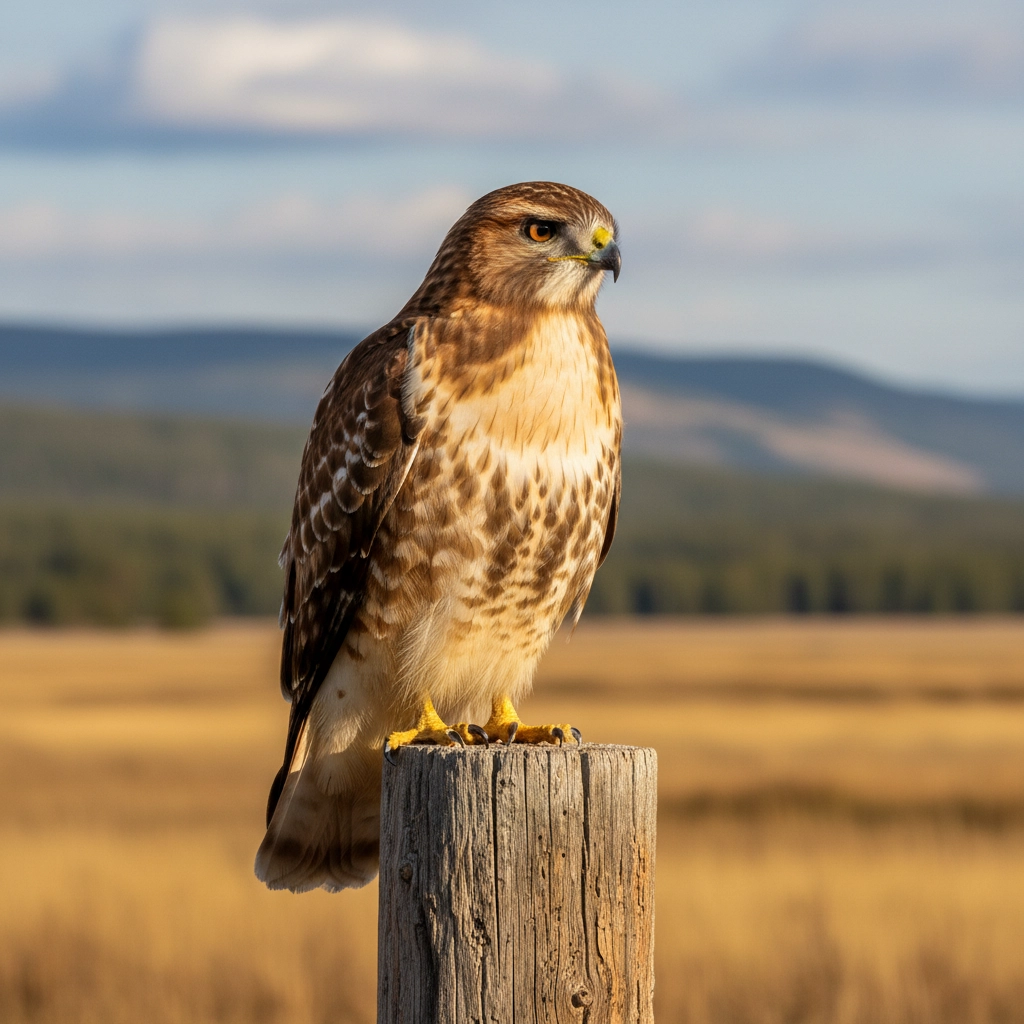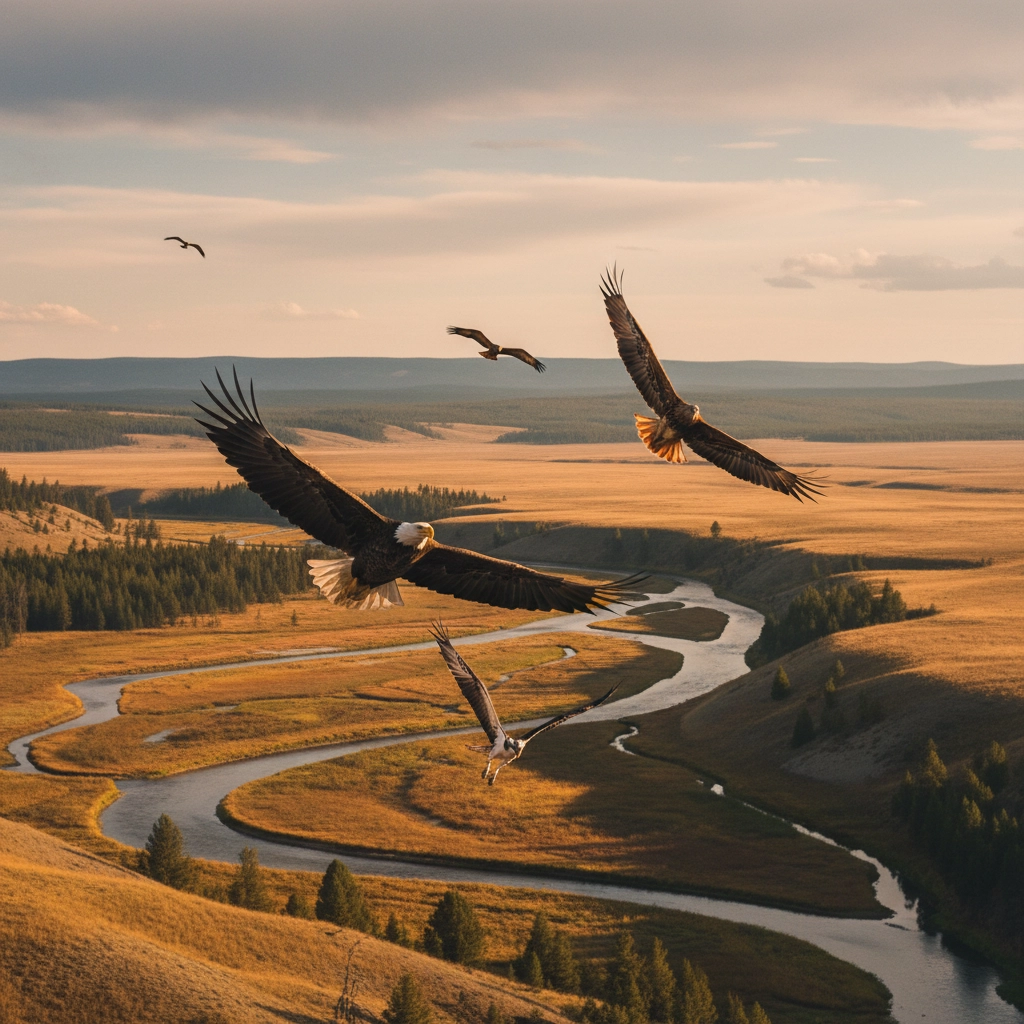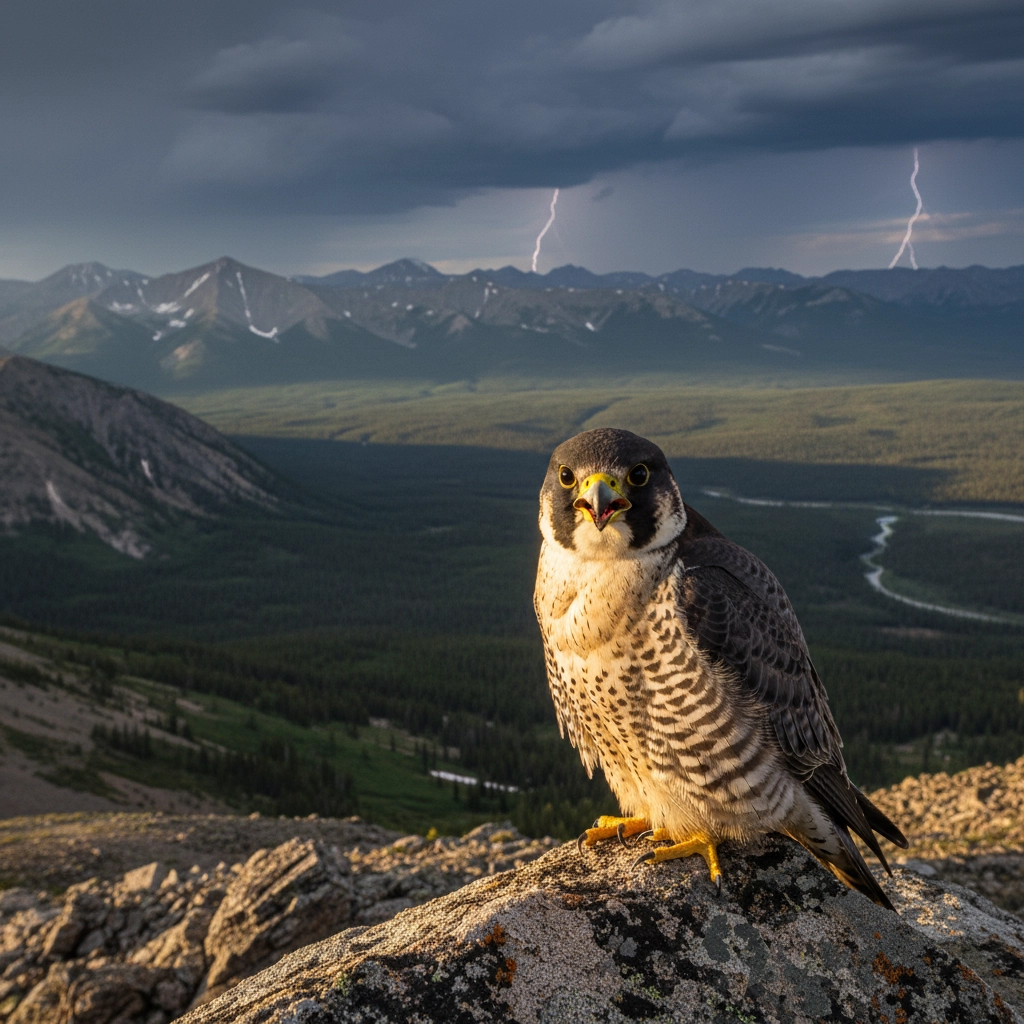Raptors of Yellowstone: Eagles, Hawks, and the Science Behind Their Predatory Power
- Caleb Mullenix
- Oct 28
- 5 min read
Understanding the remarkable diversity and specialized adaptations of Yellowstone's raptors provides students with exceptional opportunities to examine predator-prey relationships, ecosystem dynamics, and conservation biology in action. Yellowstone National Park supports an impressive 19 breeding raptor species, making it one of North America's most significant habitats for studying these apex predators and their critical ecological roles.
Yellowstone's Raptor Diversity: A Living Laboratory
The Greater Yellowstone Ecosystem serves as a natural laboratory where students can observe and study multiple raptor species within a single expedition. These birds of prey occupy diverse ecological niches across the park's varied habitats, from the grasslands of Hayden Valley to the high-elevation peaks of the Absaroka Range.
The park's raptor population includes golden eagles, bald eagles, red-tailed hawks, Swainson's hawks, northern goshawks, Cooper's hawks, sharp-shinned hawks, rough-legged hawks, ferruginous hawks, American kestrels, merlins, prairie falcons, peregrine falcons, and several owl species. This diversity allows students to compare and contrast different hunting strategies, habitat preferences, and ecological adaptations within a concentrated study area.

Key Species and Their Ecological Significance
Golden Eagles: Masters of Mountain Hunting
Golden eagles represent one of Yellowstone's most formidable predators, with researchers documenting 29 confirmed breeding pairs throughout the park. These magnificent raptors demonstrate remarkable hunting versatility, capable of taking prey ranging from small mammals to young ungulates. Students can observe their preference for open terrain and elevated perching sites, which provide optimal visibility for detecting movement across vast landscapes.
The golden eagle's hunting success depends on their exceptional eyesight: up to eight times more powerful than human vision: and their ability to reach diving speeds exceeding 150 miles per hour during hunting stoops. Their large territory requirements and sensitivity to human disturbance make them important indicators of ecosystem health and habitat quality.
Red-Tailed Hawks: Adaptable Predators
Red-tailed hawks exemplify successful adaptation to varied hunting environments, with researchers identifying at least 60 active territories across Yellowstone's northern range. These hawks employ multiple hunting strategies that students can readily observe and document during field studies.
Perch hunting involves scanning for prey from elevated positions such as dead trees or rocky outcrops, followed by swift, controlled dives to capture identified targets. Aerial scanning demonstrates their soaring capabilities, as they utilize thermal updrafts to maintain flight while searching vast areas with minimal energy expenditure. Advanced students can observe cooperative hunting behaviors, where mated pairs coordinate their positions to increase capture success rates.

Ospreys: Specialized Fish Hawks
Ospreys provide exceptional opportunities for students to study specialized predatory adaptations. These large raptors have evolved unique anatomical features specifically for catching fish, including reversible outer toes for gripping slippery prey, specialized nasal valves that close during dives, and dense, oily plumage that provides waterproofing.
Students can observe osprey fishing techniques that demonstrate precise calculation of light refraction in water, timing of dives, and the remarkable strength required to lift substantial fish while generating enough lift to clear the water surface. Their dependence on healthy fish populations also connects raptor studies to aquatic ecosystem health and conservation challenges.
Scientific Adaptations: The Anatomy of Predatory Success
Visual Systems and Sensory Capabilities
All raptors possess extraordinary visual systems that students can examine through behavioral observation and comparative anatomy studies. Raptor eyes occupy a significantly larger proportion of skull volume compared to other birds, with specialized retinal structures that provide exceptional visual acuity and motion detection capabilities.
Students can document hunting behaviors that demonstrate these visual capabilities, such as the ability to detect small mammal movements in grass from heights exceeding 1,000 feet, or tracking fish movement beneath water surfaces despite light refraction. The forward-facing position of raptor eyes provides binocular vision essential for accurate distance judgment during high-speed pursuit and capture sequences.
Anatomical Weaponry: Talons and Beaks
The curved, sharp talons of raptors represent highly specialized tools that students can examine through field observation and comparative studies. Different species exhibit distinct talon configurations that reflect their preferred prey and hunting methods. Golden eagles possess massive talons capable of exerting crushing pressure exceeding 750 pounds per square inch, while American kestrels have more delicate talons adapted for capturing insects and small rodents.

The hooked beak structure common to all raptors demonstrates convergent evolution for tearing flesh and processing prey. Students can observe species-specific variations in beak size and shape that correspond to different dietary specializations and prey handling requirements.
Flight Adaptations and Hunting Strategies
Wing morphology among Yellowstone's raptors provides excellent opportunities for students to examine the relationship between form and function in predatory behavior. Broad-winged species like red-tailed hawks excel at soaring flight that conserves energy during extended hunting periods, while pointed-wing species like peregrine falcons achieve exceptional speeds during pursuit hunting.
Students can document different flight patterns and correlate them with hunting success rates, prey preferences, and habitat utilization. Thermal soaring behaviors demonstrate physics principles in action, as raptors exploit rising air currents to maintain altitude with minimal energy expenditure.
Research and Monitoring: Student Science Opportunities
The Yellowstone Raptor Initiative
The comprehensive Yellowstone Raptor Initiative (2011-2015) established baseline data that continues to inform current research and conservation efforts. This program combined professional biological surveys with citizen science contributions, providing a model for student involvement in ongoing wildlife research.
Students can participate in raptor monitoring protocols that contribute to long-term population studies. These activities include territory mapping, breeding success documentation, and behavioral observation records that support management decisions and conservation planning.
Citizen Science Participation
Current raptor monitoring efforts actively incorporate citizen science data, creating opportunities for student groups to contribute meaningful scientific information. Students can learn standardized observation protocols, data recording techniques, and quality control procedures that ensure their contributions meet scientific standards.

Conservation Challenges and Solutions
Raptor populations face multiple conservation challenges that students can examine through field studies and research projects. Declining breeding success rates documented for golden eagles and red-tailed hawks provide case studies for investigating habitat modification, prey availability, and human disturbance impacts.
Students can analyze the relationship between energy development, habitat fragmentation, and raptor population trends. Climate change impacts on prey species distributions and breeding phenology offer additional research opportunities that connect local observations to global environmental patterns.
Optimal Learning Locations and Field Study Opportunities
Hayden Valley: Migration Corridor Studies
Hayden Valley functions as a critical migration corridor for at least 17 raptor species, providing exceptional opportunities for comparative species studies and migration behavior documentation. Students can establish observation stations that document species composition, flight patterns, and temporal migration patterns.
The valley's open terrain and elevated viewing positions enable safe, close-range observation of hunting behaviors, territorial displays, and interspecific interactions. Advanced students can conduct prey availability surveys that correlate with raptor abundance and distribution patterns.
Mount Washburn and Dunraven Pass: High-Elevation Studies
These elevated locations provide opportunities to study species that prefer mountainous terrain and observe altitudinal migration patterns. Students can document the relationship between elevation, habitat characteristics, and species composition while examining adaptations to high-altitude environments.

Educational Integration and Trip Planning
Incorporating raptor studies into Yellowstone expeditions enhances understanding of ecosystem dynamics, predator-prey relationships, and conservation biology principles. Students develop observational skills, learn scientific methodology, and gain appreciation for the complexity of natural systems.
Successful raptor-focused expeditions require careful timing to coincide with peak activity periods and optimal weather conditions. Early morning and late afternoon observations typically provide the highest activity levels and best learning opportunities.
For educators planning Yellowstone expeditions, comprehensive preparation should include species identification guides, behavioral observation protocols, and safety procedures for wildlife viewing. Students benefit from pre-trip instruction on raptor biology, identification features, and expected behaviors to maximize field learning experiences.
The scientific study of Yellowstone's raptors provides students with direct connections to ongoing research, conservation challenges, and the practical application of biological principles in natural settings. These magnificent predators serve as indicators of ecosystem health while offering unparalleled opportunities for authentic scientific learning and discovery.



Comments